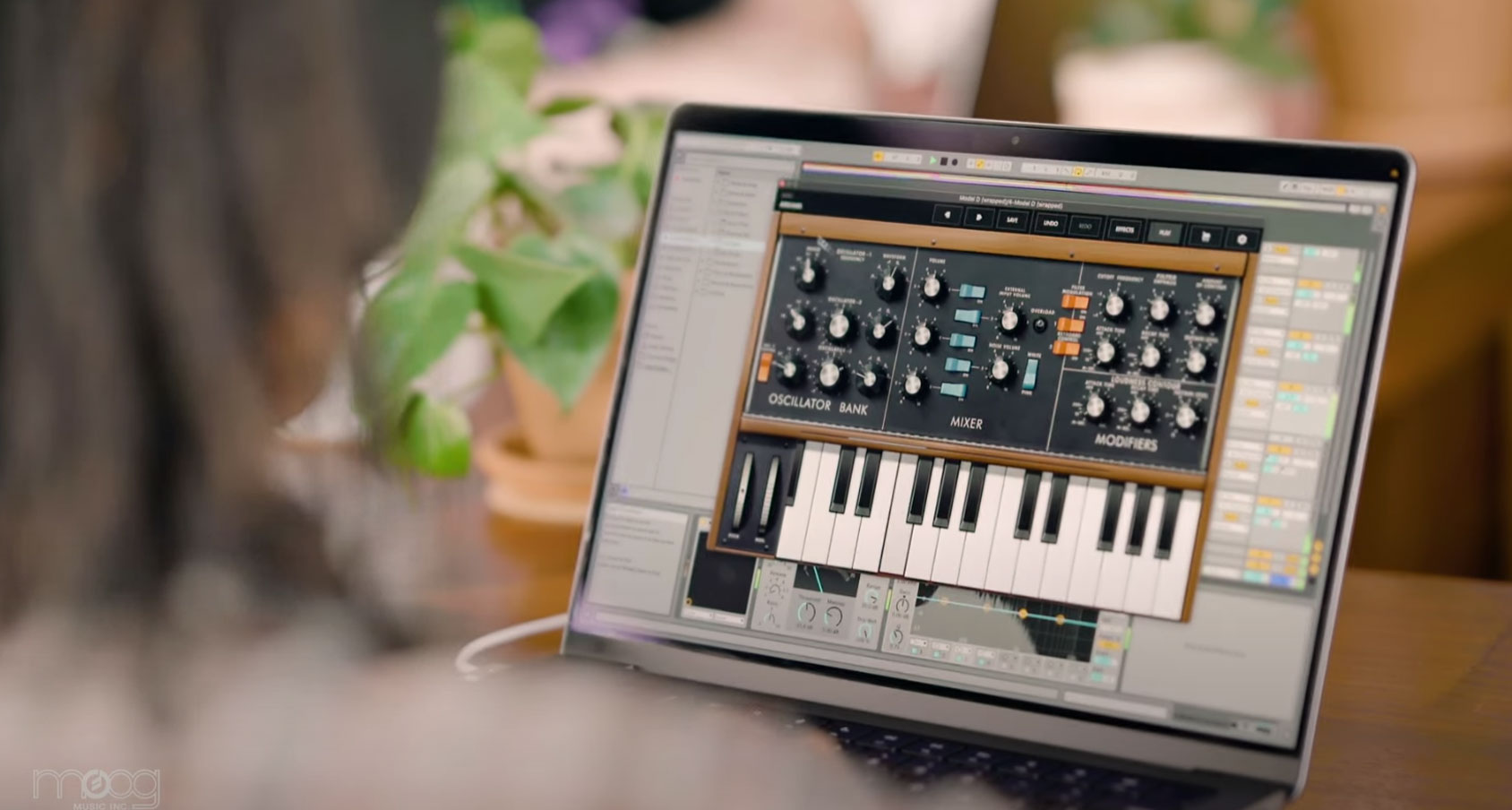Surely Moog’s own Minimoog Model D emulation has to be the best in town, right? Yes, probably. It’s not the only contender, but it’s the best place to start. The first thing to understand is that it’s for iOS and macOS only and so if you’re a Windows user you should skip down to the next one.
Moog’s Model D is a beautiful piece of work. They don’t have to worry about infringing copyright and so can revel in the classic design and offer up the exact interface you expect to see. Everything is in its place, beautifully rendered and laid out, ready to play.
It’s designed as a direct emulation of the original, but even Moog couldn’t help adding in a few essential enhancements. The first and most crucial being that it supports 4 notes of polyphony. The original was of course monophonic and now we have a polyphonic Minimoog – that’s amazing, but not very authentic. Moog has also added an arpeggiator with a chord mode, a bunch of excellent effects, a new take on the classic overdrive and a stereo output.
The Model D comes with over 160 presets of classic sounds, which is something else the original couldn’t do. You could argue that something is lost when you enhance an old product and give it abilities it never had. Because often it’s the limitations that drive us to moments of genius.
Specifications:
- Specs: MacOS, iOS
- Format: AU
Street Price: $29.99
MoogMusic.com
